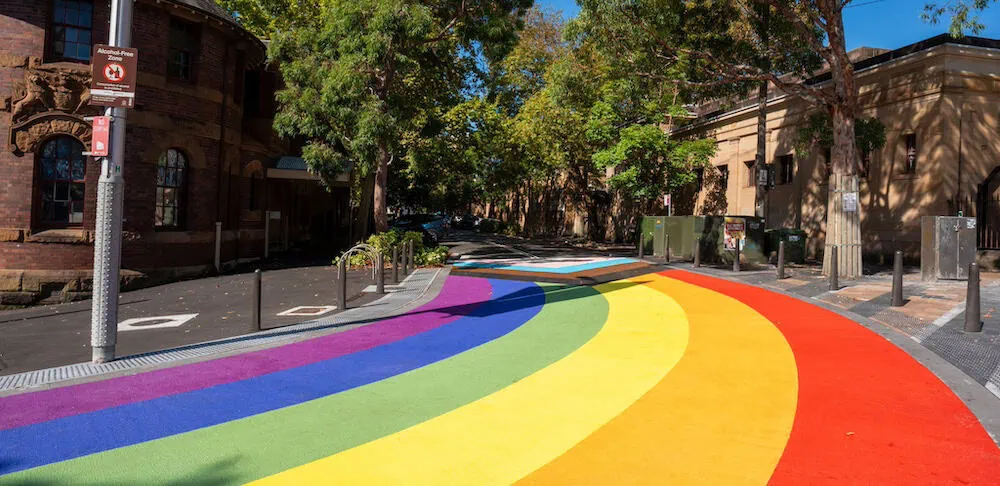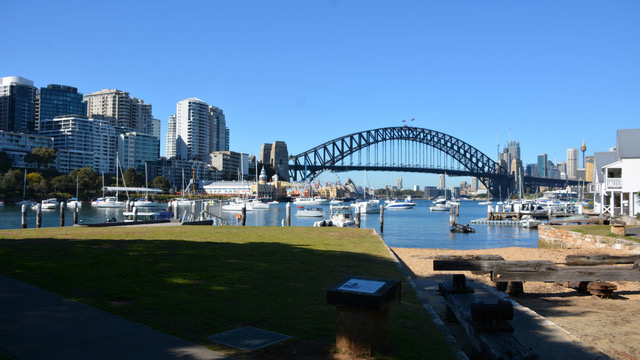
Rising sea levels threaten Gardens
BY MICK ROBERTS
A $200,000 rescue project is underway for historic retaining walls in the Sydney Royal Botanic Gardens damaged by rising sea levels.
The walls around the main pond and surrounding islands on land that was reclaimed from the harbour over 150 years ago, are undergoing an extensive make-over because of the ravishes of time and erosion from rising harbour levels.
The restoration project, funded through corporate support, individual donors and the Botanic Gardens Trust, is the result of a 10cm rise in the levels of the harbour over a century, leading to weathering of the retaining walls.
‘All this lower section of the Gardens is reclaimed land that was originally part of Sydney Harbour,’ Botanic Gardens Trust, Acting Executive Director Bernard Carlon said.
With global warming, Sydney Harbour water levels are expected to rise even further and work to restore and higher the retaining walls will protect them into the future, says Mr Carlon.
‘Surrounding the islands are heritage sandstone walls that were built in 1870. Their overhaul will help protect the islands from ongoing erosion,’ Mr Carlon said.
The area, under construction, once finished, will result in a restored landscape that reflects the intentions of some of the Trust’s earliest Directors.
Mr Carlon said work began on enlarging the Gardens in 1831 by reclaiming part of what was then known as Sydney Cove.
The islands of the pond were completed during the final phase of reclamation. Records and early photographs of the 1879 panorama show the area between the main pond and the seawall had only just been completed and planted.
The work on the restoration of the pond area is 15 per cent complete, with the project expected to be completed in about eight weeks.
Mr Carlon said the walls will be finished in four to five weeks. ‘And as long as plant material is available, the landscaping will be complete about three weeks after the walls are finished,’ he said.
Before the restoration of the walls began, the water level of the main pond – which is connected by canal to Farm Cove – was reduced.
‘We’re excited about the renewal of this important part of the Gardens. The main pond, close to Farm Cove, is already enhanced by its close proximity to our beautiful harbour. This upgrade will see it become an even more enchanting place for tourists and Australians to enjoy,’ Mr Carlon said.
One of the challenges facing the Gardens is keeping the water level down.
‘We’re installing drainage behind the walls, moving and spreading 100 tonne of soil onto the islands and craning materials on and off the islands,’ Mr Carlon said.
‘The water in the main pond was treated and tested to ensure it met environmental standards prior to being discharged into the harbour. The Botanic Gardens Trust worked closely with the Department of Environment and Climate Change to achieve a best practice outcome.
‘After the walls are re-built, the soil on the islands will be replaced and attractive new garden beds will feature interesting subtropical plants, maintaining the character of the Lower Gardens,’ he said.
Mr Carlon said the native fish and eels that found their way into the main pond and made it their home have been well taken care of during the construction phase of the project.
‘We netted the fish when the water level was low and returned them to Farm Cove where they originally came from. The Main Pond’s mullet and long-finned eels are both fairly hardy species and dispersed quickly once released. In time, the fish will return by swimming through the canal that runs from Farm Cove back to the Main Pond as they have done for many years,’ he said.
Stage one of the overhaul of the main pond and islands was completed in December 2007. It involved the removal of vegetation and replanting with grasses and sedges on the islands.










